The Nones Project: SBNRs
"I'm not religious, but I'm VERY spiritual."
Ever since I was a teenager, I’ve had a whole lot of conversations with folks about religion and spirituality. That’s probably a product of being a youth group kid in the 1990s who then went to a Christian college and was a pastor in the American Baptist Church for about twenty years. And now I do a bit of traveling and speaking around the country about religion, politics, and society. Lots of folks like to share their faith journey with me, and I’m happy to listen.
I hear a few phrases pop up over and over again. The sentence I have heard with increasing regularity lately is, “I have a lot of religious trauma.” That sentiment is often coupled with an individual telling me that they struggle with the idea of religion, but they still feel like they are deeply spiritual. This is a key theme in Tara Isabella Burton’s Strange Rites: New Religions for a Godless World, which was published in 2020.
Burton believes that lots of people have moved from institutional religion to more individualized spiritual practices. These “Spiritual But Not Religious” folks tend to focus on personal experience, living a life of authenticity, and being in tune with their own emotions and feelings. For Burton, this is part of a larger movement toward “expressive individualism.”
In our data on The Nones Project, we clearly found a segment of the non-religious who would generally fit into the category that Burton describes.We use the same label common in academic literature—SBNRs. While they fit the stereotype in some ways, our data also challenges that narrative. In digging through a lot of this analysis there are some ways in which SBNRs fit the typical stereotype, but on some other metrics they really challenge us to think about this group in a different way.
In our typology of the nones that we created using artificial intelligence, the largest of the four groups were SBNRs, making up 36% of all non-religious respondents. Visualizing them on dimensions of religious and spiritual importance will help us get a sense of where they land in comparison to the previously discussed NiNos (Nones in Name Only).
As mentioned in a previous post, the NiNos are found in large numbers in the upper right quadrant of this visualization. Those are folks who place a higher value on both religion and spirituality. Among the NiNos, about 60% of them say that both religion and spirituality are somewhat or very important to them. They are easily the group that is the closest to the concept of organized religion.
In contrast, the SBNR group is densely packed in the top left of the heatmap. These are folks who score very high on spirituality metrics, but very low on religious importance. For instance, no SBNR said that both religion and spirituality were very important to them. The most popular response among SBNRs was that religion is not at all important, while spirituality is somewhat important. The next most frequent answer was: religion is not too important and spirituality is somewhat important.
In total, 70% of all the SBNRs are in the top left portion of the graph. For NiNos, only 35% can be found in those same squares. But I do want to point out the fact that not all the SBNRs are deeply spiritual. In fact, just a quarter said that spirituality was very important to them. In contrast, half chose the “somewhat spiritual” option. That’s going to come up again when we look at some metrics related to the SBNRs.
When I described the SBNRs to a friend a couple of months ago, his immediate response was: I bet that there are a whole lot of women who fall into that classification. That seems like a widely held assumption when I talk about this topic — spirituality is female stuff. I would point you to this really interesting finding from Pew: 43% of women under the age of 50 believe in astrology. That’s 23 points higher than men of the same age and 16 points higher than the entire sample.
In our data, is the SBNR category chock full of women? Not really.
In our entire sample, we ensured that the gender balance was nearly 50/50. You can see that this was not the case in each of our four subgroups. The type of none that was the most likely to skew female was NiNos (62%). However, the SBNRs were still majority women at 54%. Notice how the Zealous Atheists and the Dones are majority male. That’s all going to make sense when we get to that part of the analysis in a future post.
But that Pew finding about astrology got me wondering if the SBNRs had a whole bunch of younger women. So I calculated the average age of each gender in each of the four types of nones.
Notice that the average male NiNo is exactly the same age as the average NiNo female, right around 46 years old. For the SBNRs, there’s a pretty big age gap based on gender. A female SBNR is 42 years old compared to the male average of 51 years old. The only other group that has a larger gap are the Dones where the average male is almost ten years older than the average female.
So I just don’t know if it’s fair to say that the SBNRs are a bunch of younger women who read their horoscope on a regular basis and have a dresser full of crystals that they use for spiritual purposes. In fact, the average SBNR is solidly mid-career, often in the mid-forties. This isn’t a group of twenty-somethings experimenting with psychedelics at music festivals.
And speaking of those spiritual practices, we did ask all the nones to look over a list of potential spiritual acts and have them indicate which ones that have practiced in the prior 30 days. Respondents could select as many activities as applied from a list of spiritual practices.
The best comparison is between the aforementioned SBNRs and the rest of the nones in the sample. You know what impression I get from this graph? The Spiritual But Not Religious do engage in activities at a slightly higher rate than the rest of the nones, but not by that much. For instance, an SBNR is only three points more likely to participate in yoga compared to other nones. They are five points more likely to meditate on a regular basis. And there’s also a five point gap on reading horoscopes.
But if you look at a lot of these acts, the gap is very small and sometimes it’s statistically insignificant. That’s the case for things like saging a home or business, using tarot cards or visiting a psychic. By the way, this is a huge finding in our study: most Americans just don’t engage in these types of New Age spiritual practices.
In crafting our survey, we wanted to throw in a few statements that may be helpful in teasing out the spiritual inclinations of the non-religious. For instance, we asked respondents how much they agreed or disagreed with this statement: Humans are at heart spiritual beings.
We found quite a bit of openness to spirituality among the entire sample of the non-religious. About 47% of them generally agreed to the concept, 37% were on the fence, and only 16% said that they disagreed that human beings were spiritual. I think that speaks to the general sense that we get when poking around this data - a huge majority of Americans (religious or not) feel that spirituality is an innate facet of human beings.
But what’s worth reflecting on is that the NiNos were easily the most likely to say that people are spiritual. In our sample, nearly three quarters of them agreed and almost none of them disagreed. In contrast, 60% of the spiritual but not religious folks said that humans were generally spiritual. A third of them couldn’t commit either way and just six percent disagreed.
Looking broadly, a clear finding here is that the SBNRs are fairly spiritual. Especially when you compare them to the Zealous Atheists and the Dones. But they are not as spiritual as the NiNos. I think this speaks to the idea that traditional religion and spirituality runs along the same tracks. Because the SBNRs are not that religious, and that tamps down their level of spirituality, too.
But, there’s one more bit of analysis I want to throw in that I think helps tell a more complete picture about what is happening with the spiritual but not religious. We included a significant battery of questions about how the SBNRs think about religion, generally speaking. I’ve included three of those statements below.
Is religion a form of child abuse? Just 20% of SBNRs agreed with that sentiment. That was 10 points lower than the rest of the non-religious. Does religion have no place in the modern world? Only 15% of SBNRs said that was true, which was 19 points lower than all the other nones. Does religion need to be eradicated? Only 12% of SBNRs in this survey agreed. It was 29% of the rest of the non-religious.
I think this is a good way to end this discussion of our findings related to the spiritual but not religious. The SBNRs score very low on traditional measures of religion, but fairly high on measures of spirituality (but not that high). They do tend to skew a bit female, but not as much as many would assume. When it comes to spirituality stuff the SBNRs are just a bit more likely to do things like yoga or meditation. But the differences are really marginal, overall.
Yes, the SBNRs are a real phenomenon. And we believe that this work is helping to sketch out the general outlines of this group. However the details are still fairly blurry. Maybe that’s just a function of trying to put an amorphous group into a discrete box. I mean, it’s a group that goes out of its way to eschew labels. Why would they make it easy to classify them?
Code for this post can be found here.
Ryan P. Burge is a professor of practice at the Danforth Center on Religion and Politics at Washington University.




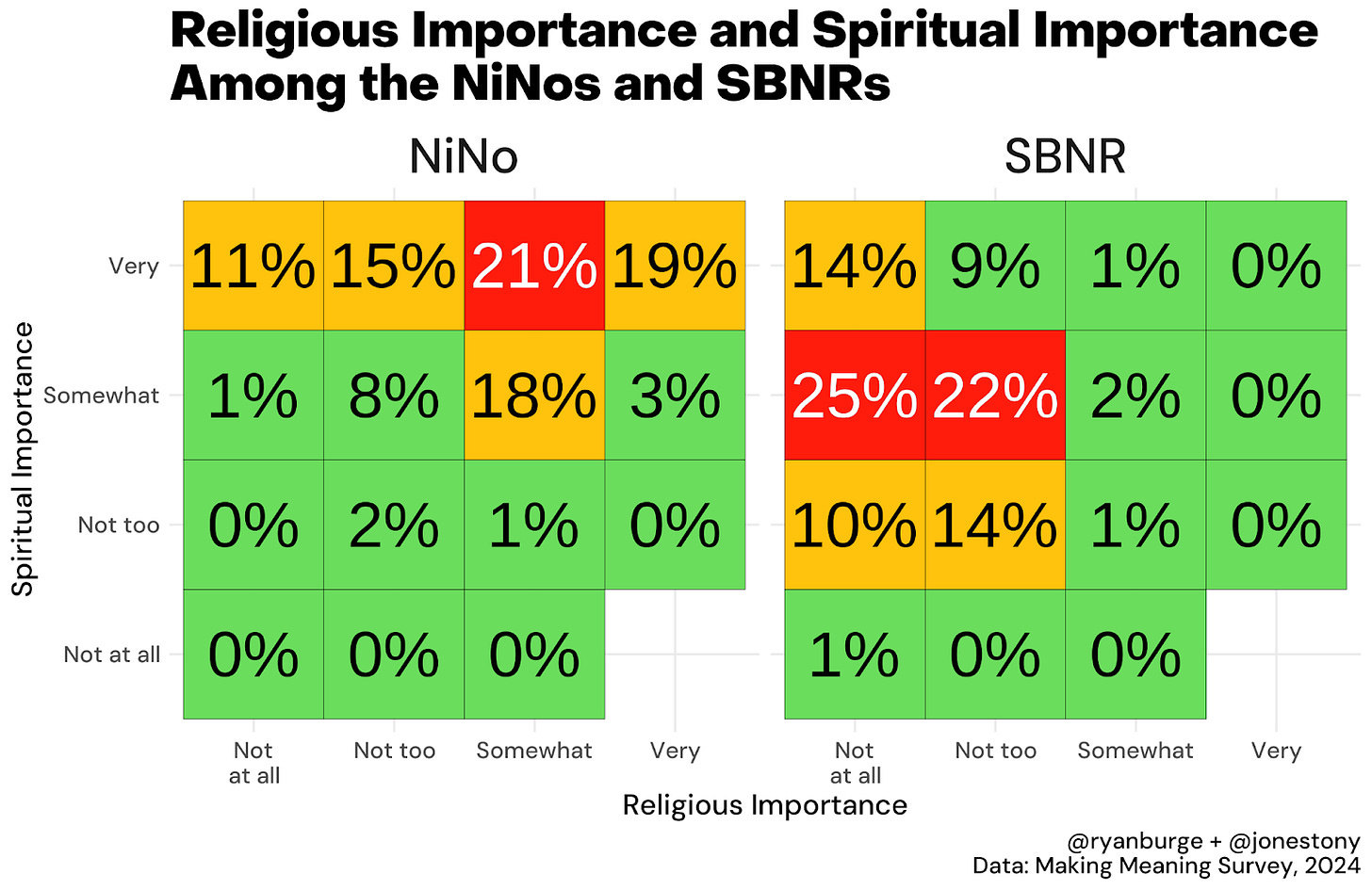
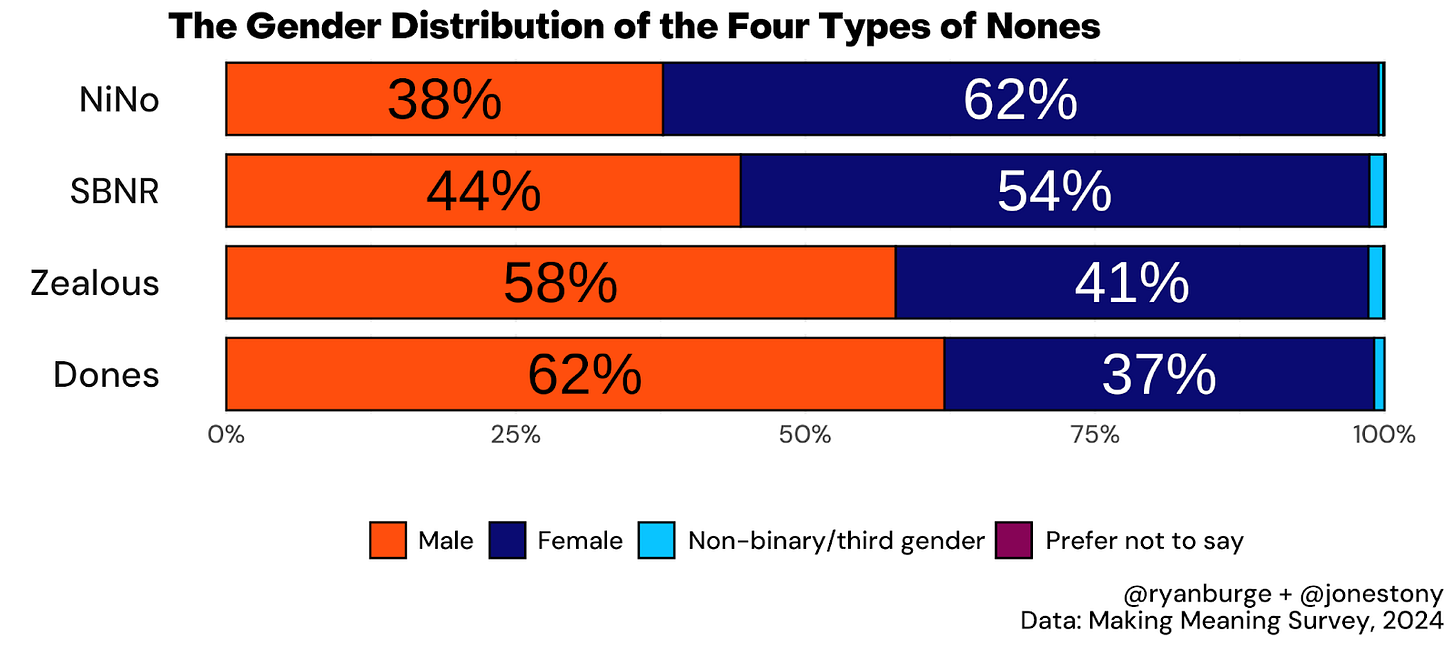
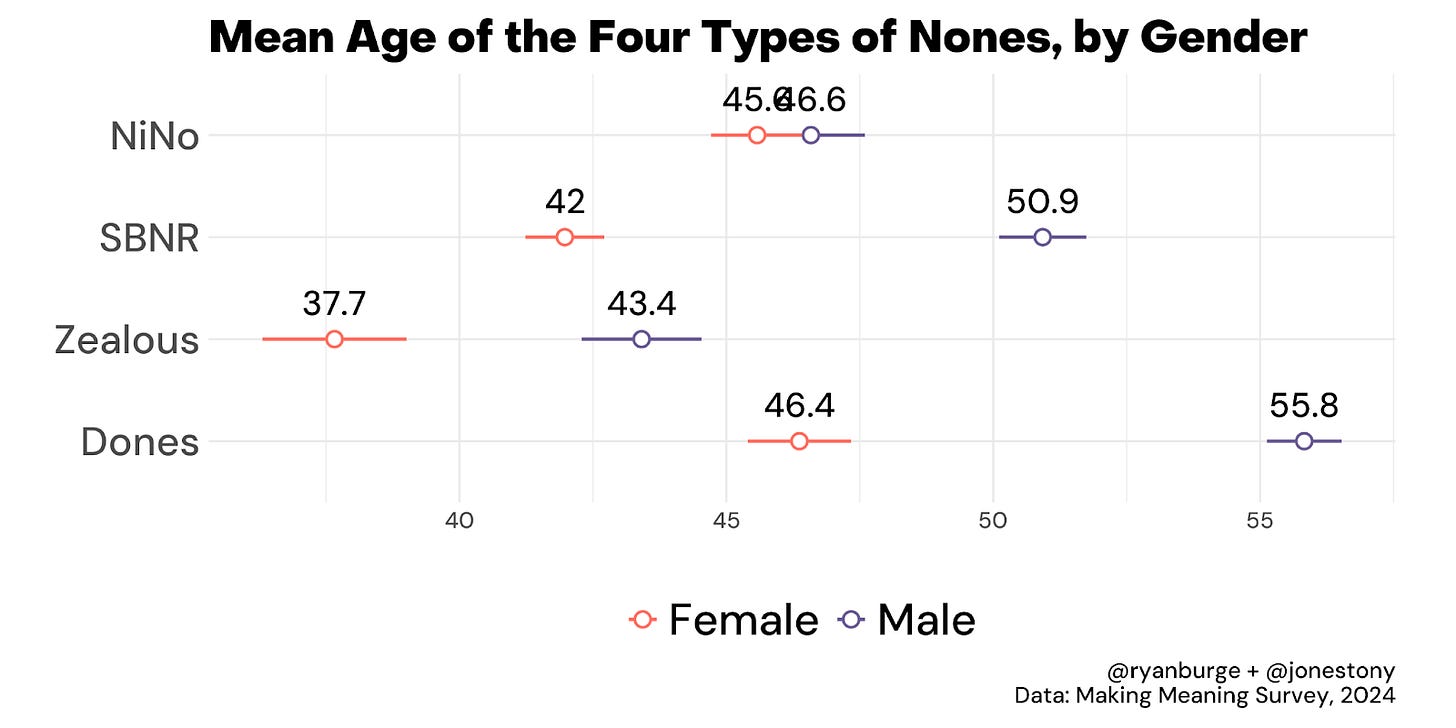
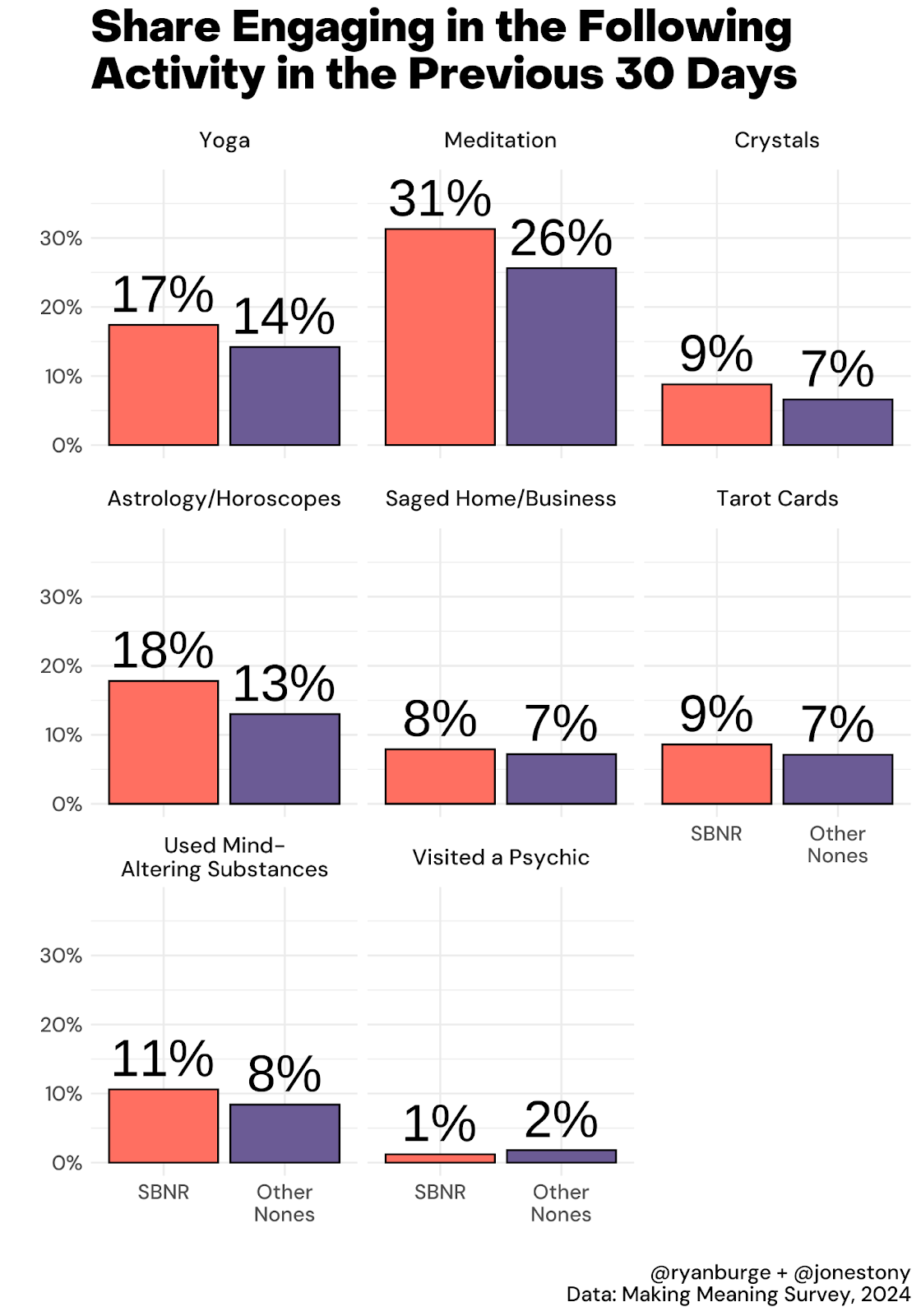
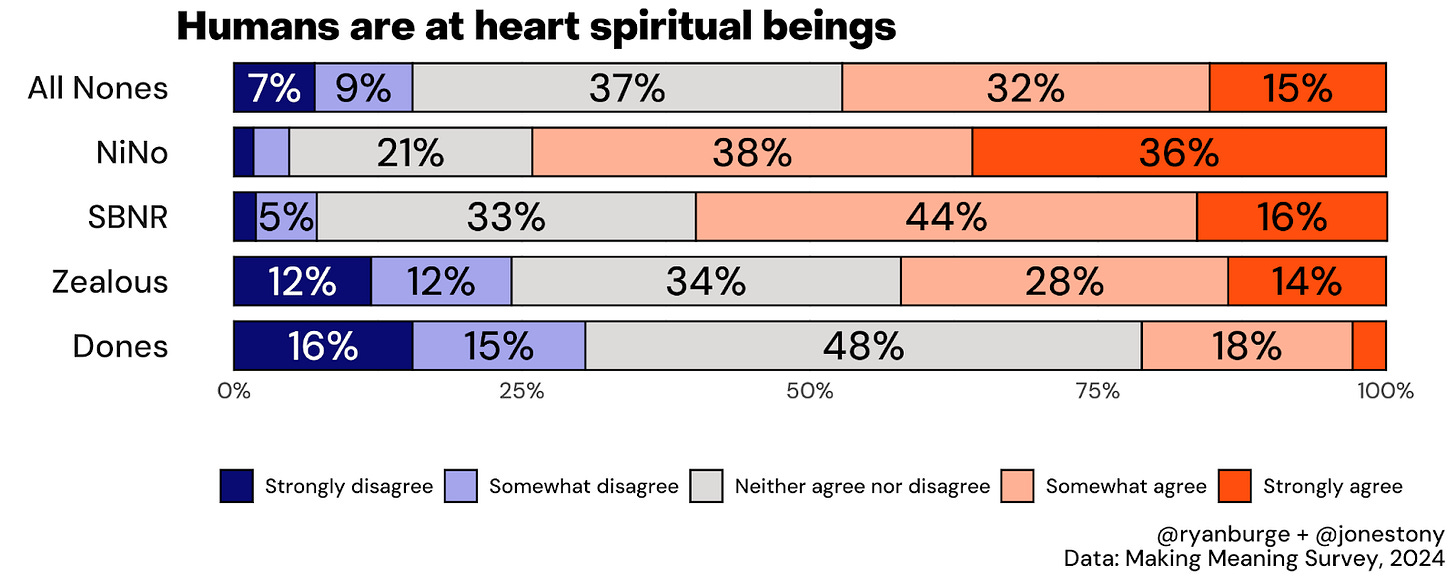
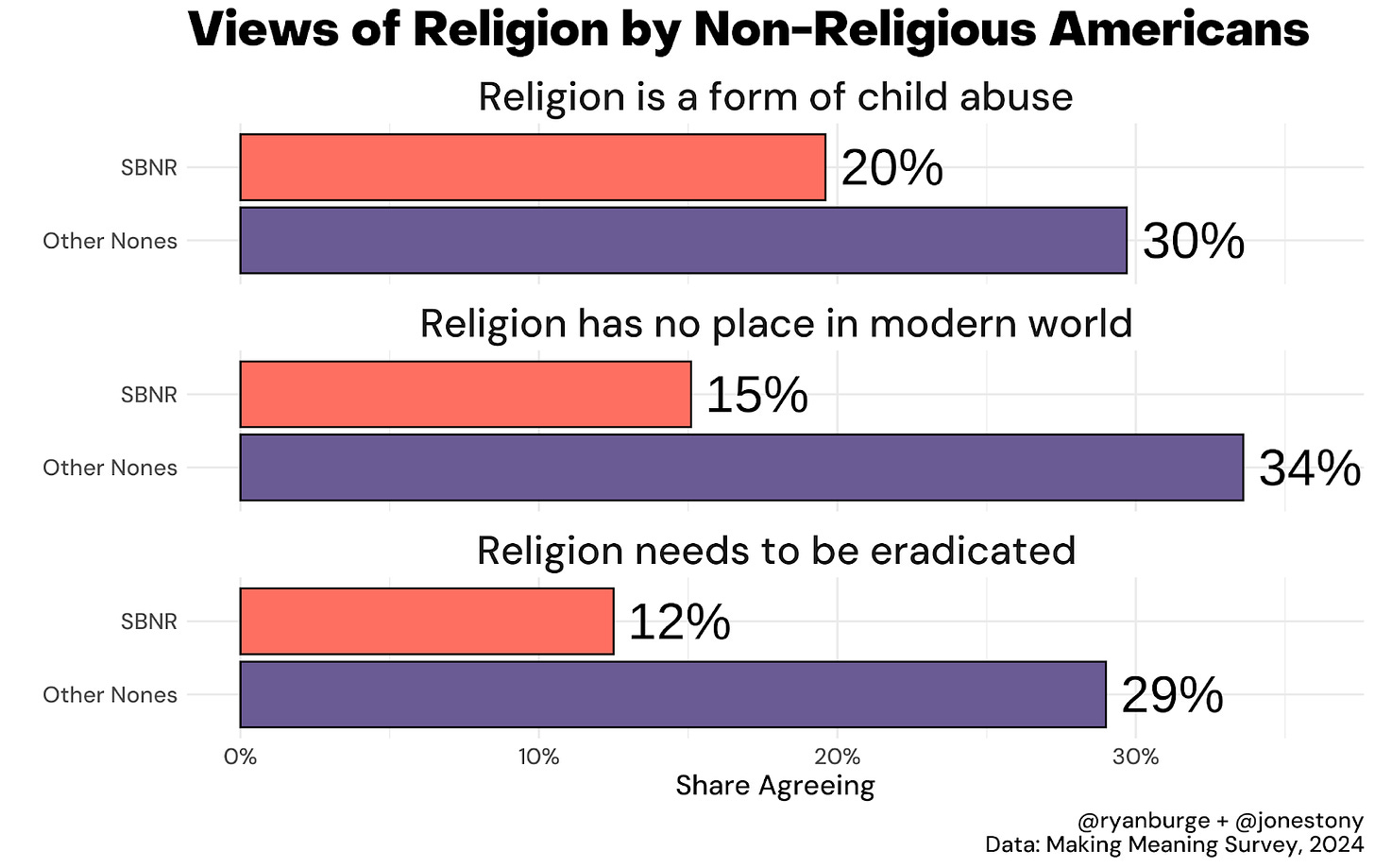
Great analysis and info... as a former longtime SNBR.
I'll try not to repeat this every time they're mentioned but it's my firm understanding that yoga, meditation and even tarot aren't viewed as spiritual by the vast majority of people who do them these days. Headspace is a hugely popular meditation app and is specifically non-religious (https://help.headspace.com/hc/en-us/articles/218394158-What-kind-of-meditation-is-Headspace). Also my wife uses tarot in the writing workshops she organises as story prompts.